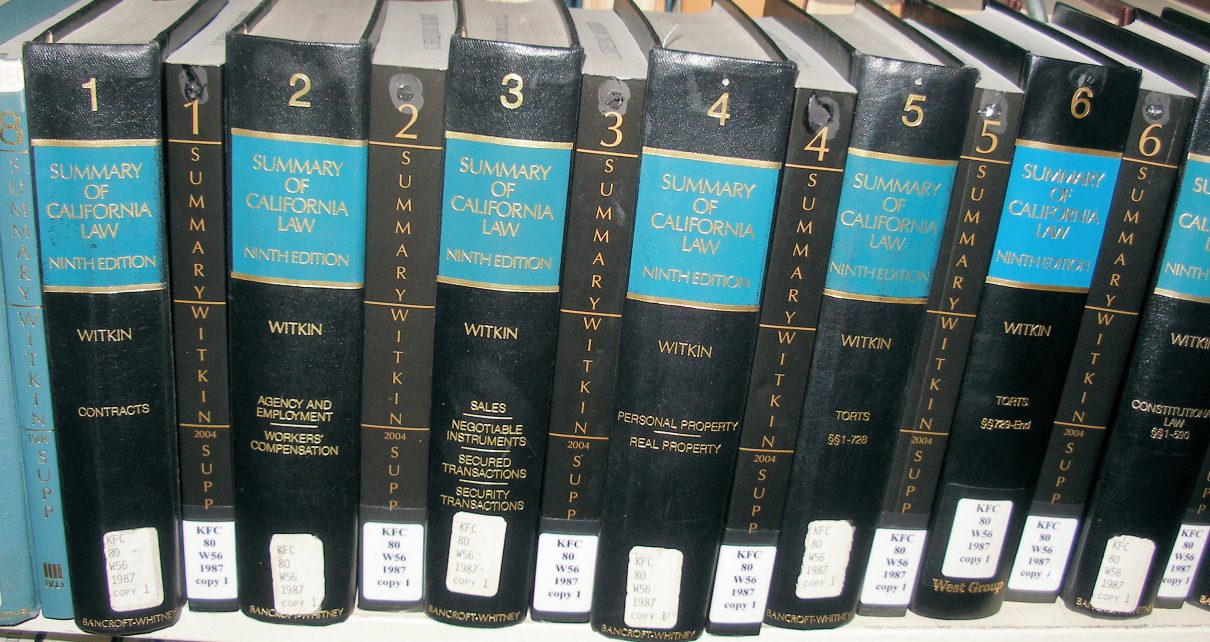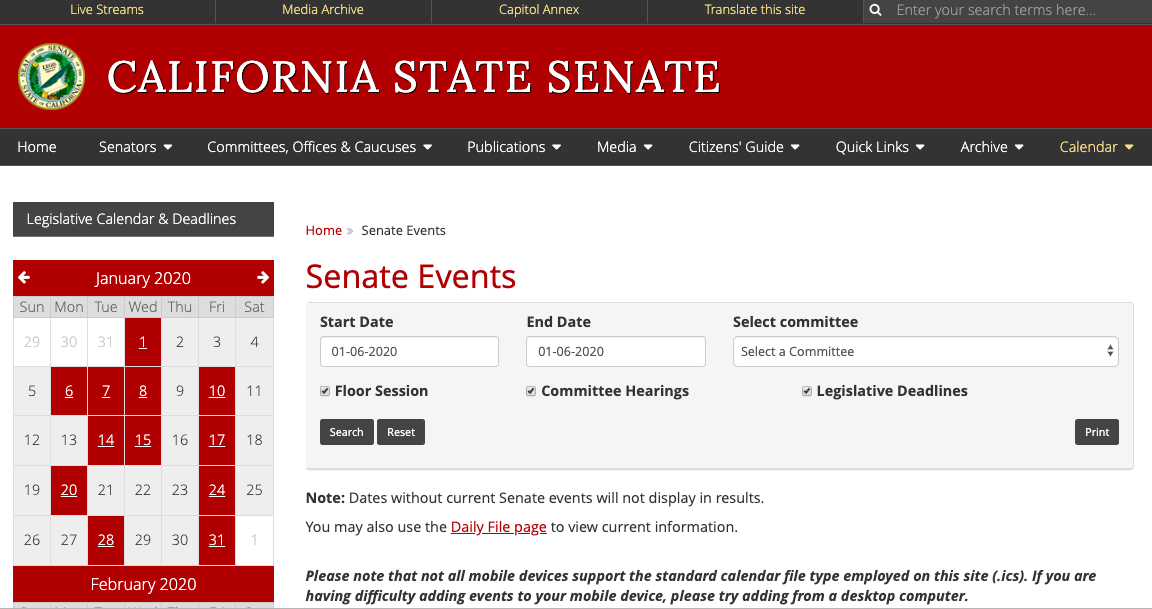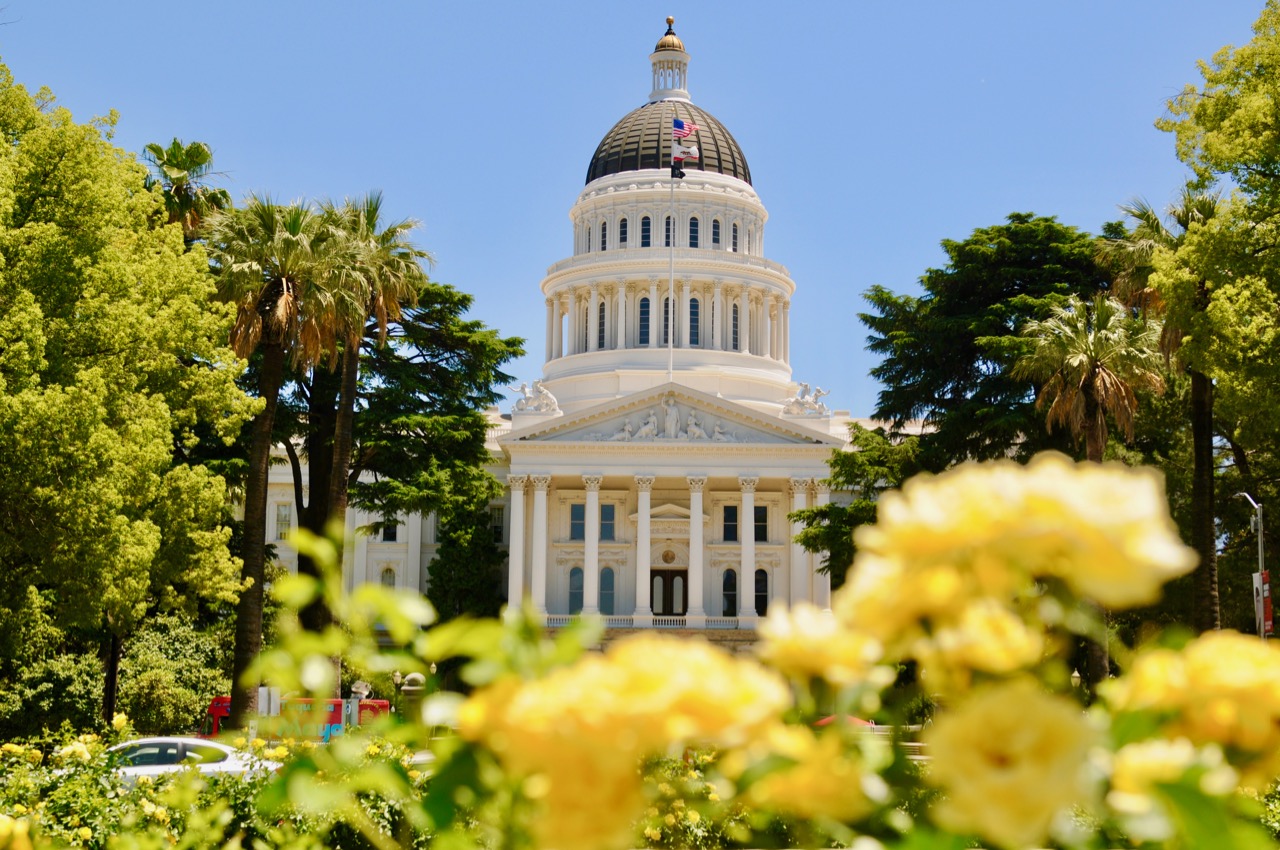
Old law books. (Photo: ebay)
Researching the Legislative History of an Enacted California Statute
Do you have a general understanding of the legislative process in California?
By Chris Micheli, July 8, 2020 12:37 am
For those who need to research the legislative history of a bill that was enacted into law in the State of California, there are a number of options to use. This article briefly describes some of those avenues for the reader to pursue.
Be sure you are generally familiar with how bills are enacted in California
Some questions to ask yourself:
- Do you have a general understanding of the legislative process in California?
- Do you know the differences between the Assembly and Senate, policy and fiscal committees, and bill analyses completed for committee and floor deliberations?
- Do you understand which entities create documents that are considered during the legislative process, including non-legislative ones, such as the Department of Finance and state agencies?
It is important for researching the legislative history of an enacted statute in California to possess a basic understanding of what legislative history research consists of and where to look for insights into what the Legislature intended when it enacted a new law or amended an existing statute.
An insistence upon going beyond simply reading the statute allows one to consider valuable extrinsic evidence of what was intended by the Legislature in the adoption of the particular statute of interest.
Decide how much time you have to spend on this research project
Some questions to ask yourself:
- How quickly do you need the legislative history materials?
- How much time do you have to conduct research into this statute’s legislative history?
In general, state legislative history is elusive and California, like many other states, is no exception to this rule. For example, as opposed to the Congressional Record which is basically a verbatim recording of federal legislative proceedings, the California Legislature does not publish transcripts of its floor debates or committee hearings. As a result, there is not as much valuable material available and the hunt for insights into legislative intent can be time-consuming and may not always be productive.
As a result, it is important to avoid potential frustration and decide before you embark on your research how much time you are willing to devote to this task. Keep in mind that many state courts will look at the “plain meaning” of a statute when determining legislative intent and so your legislative intent research may ultimately be ignored by the courts.
Check California legislative history resources
Some questions to ask yourself:
- Is the material found online (generally since 1993) sufficient or do you need to visit the State Archives for older legislative materials?
- What information is actually available for the particular statute and preceding bill?
The Office of the Legislative Counsel in California (www.leginfo.legislature.ca.gov) has placed relevant legislative materials online since 1993, including all versions of a bill’s text, all of the committee and floor analyses, all of the committee and floor votes, bill histories.
In addition, the California State Archives has a vast collection of original legislative papers that can be accessed by source and session year (e.g., authors’ files, committee and study files, Governor’s Chaptered Bill Files, party caucus files, Senate Floor analyses files, agency files, Law Revision Commission Study Files). Interested persons can phone in research requests to the State Archives at (916) 653-2246, but be prepared to wait as they often have backlogs. “Walk-ins” receive priority treatment and the $.25 per page cost must be paid in advance for any photocopied documents.
Consult an annotated code to identify relevant session laws.
Some questions to ask yourself:
- Which bill affected the statute (now the code section) of interest to you?
- What was the law prior to the adoption of the statute?
- Did the statute add, amend or repeal sections of law?
Following the text of each statute, you will find references to the statute’s session laws. You will need the information, primarily the bill number, to guide your legislative history research.
Review the text of the session laws
Session laws are all the laws from a given legislative session in the order in which they were passed, and they include uncodified acts that never become part of the codified laws. On occasion, a bill’s preamble will include a statement of purpose, often referred to as findings and declarations in California. This might assist you in ascertaining the Legislature’s intent.
You will also want to compare versions of the statute if it has been amended though the legislative process. You should also review the different versions of a bill, including all of its amendments. What words, phrases or even entire code sections changed due to this bill?
Courts have ruled that contemporaneous, un-passed legislation may be a significant indicator of the intent underlying legislation passed during the same session, for example. Were there any similar bills that did not pass during the same legislative session?
Check Lexis or Westlaw’s legislative history databases
Online research tools can be helpful. For example, Legislative Research & Intent LLC, which is a commercial provider of legislative history research, supplies numerous complimentary research assistance and resources at www.lrihistory.com. Companies such as LRI conduct legislative intent research and certify the documents they find and can provide expert testimony in court.
Commercial databases also provide helpful legislative intent documents in numerous states, including in California.
Review the California Assembly and Senate Journals
Some questions to ask yourself:
- What happened in the Legislature during the process of adopting this statute?
- What is the statute’s legislative history?
- Which committees considered the bill?
The Journals do not always provide valuable legislative history because they have limited information. However, letters of intent by the author, committee reports, and similar information are contained in the Journals.
Compare versions of the bill
By comparing different versions of a bill, you can identify which text has been added or deleted from a bill. Sometimes, these additions or deletions can help clarify the legislative intent behind the bill.
The dates of all versions of the bill – as introduced, amended, enrolled, and chaptered – along with the Legislative Counsel’s Digest are set forth on the first page of all California bills. Always note when your language of interest came into print and any relevant amendments.
Previous legislation that is related, but failed, is relevant to ascertaining legislative intent. In other words, the history of predecessor failed bills can be considered relevant when the legislative effort spans multiple sessions.
Check the California Assembly and Senate websites
Pursuant to the California Constitution, the Assembly and Senate must make videos and audios of all legislative committee hearings and floor sessions and post them on their respective websites. As a result, there are video files of committee hearings and floor sessions from January 2018 to present.
Look for media coverage
Some questions to ask yourself:
- Why was the statute adopted?
- What needs prompted its adoption?
- What problem or issue was the Legislature trying to correct or address?
It may be helpful to review news coverage prior to, during, and after the enactment of the statute you are examining. Press reports may provide useful information that could give insights into legislative intent.
Contact the California State Assembly or State Senate committees and author’s office
Some questions to ask yourself:
- What has happened since the statute was created?
- What has been the response of the courts, the agency charged with administering the statute, the legislature, the public, scholars, etc.?
Several state legislative offices have potentially useful materials (i.e., legislator offices, committee offices, partisan offices, floor analysis offices), especially when it comes to more recent legislation, as well as agency analyses and bill files. Access to records held by these offices varies widely depending on the personalities involved and their willingness to make their files available to members of the public. The Legislative Open Records Act, Gov’t Code Sections 9070, et seq. assures public access as specified.
Other documents to check related to legislative history and intent
The following is a list of key documents that California courts have generally accepted as evidence concerning legislative history and intent of statutes:
- Interim hearing study and/or transcript and related files. Excerpts from testimony at public legislative hearings which preceded the enactment of a statute may be of some relevance in ascertaining legislative intent.
- Other formal studies and/or recommendations, such as those published by the California Law Revision Commission or a state agency.
- Bill Background Worksheets, which are requested by the committee and filled out by the author’s office, sometimes with attachments.
- Policy and fiscal committee analyses (both partisan and nonpartisan versions).
- Department of Finance fiscal reports.
- Floor analyses for third reading (both partisan and nonpartisan versions).
- Statements by the author for committee and floor purposes.
- The legislative author’s letter to the Governor. Note that the courts can be more friendly toward such a letter if the letter casts light on the history of a measure and is a reiteration of legislative discussion and events, and not merely an expression of personal opinion.
- Statements by proponents and opponents, such as letters, testimony, position papers, etc.
- Analyses by state agencies.
- Opinions by the Legislative Counsel and the Attorney General.
- Enrolled Bill Reports to the governor from various state entities, such as the Legislative Counsel, agencies and departments, and the governor’s staff.
Although not exhaustive, these avenues can point readers in the right direction for purposes of researching statutes enacted in California.
- Frequently Asked Questions about When Elected Officials Take Office - April 25, 2024
- Frequently Asked Questions About Ethics Training for Local Agencies - April 24, 2024
- Frequently Asked Questions about Privileges of Voters in California - April 23, 2024




